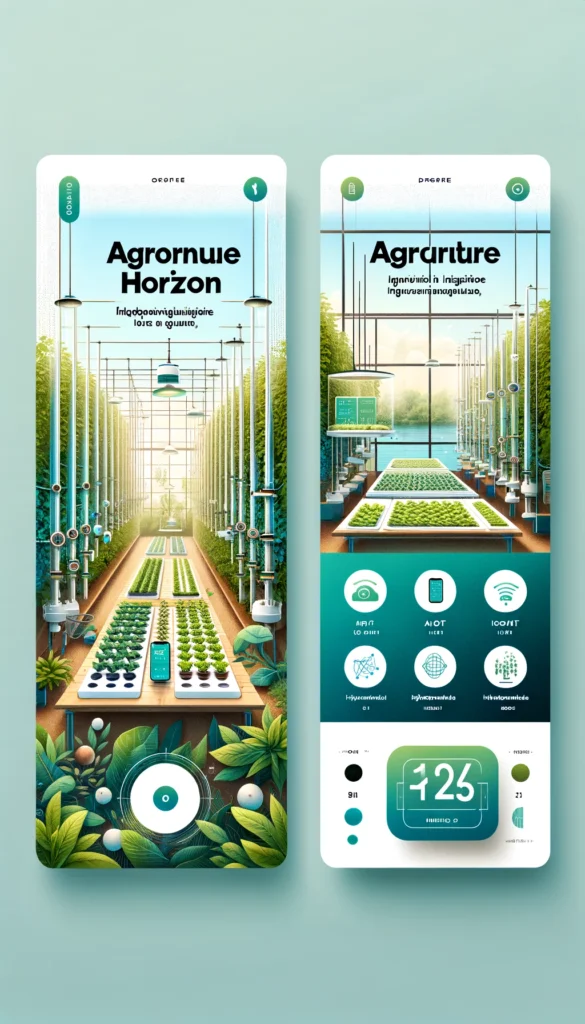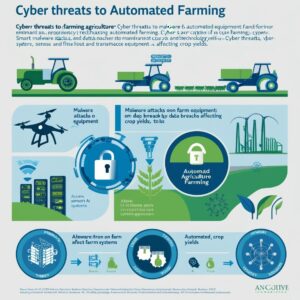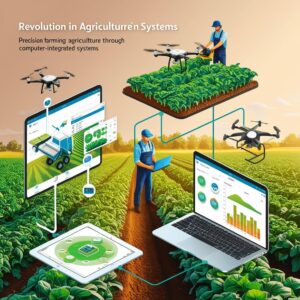Want to get your kids (or even yourself) more excited about eating vegetables? Growing them at home might be the trick! Hydroponic gardening allows you to grow a variety of veggies without soil, making it a great way to eat fresh, pesticide-free produce year-round. Plus, it’s easier than you might think! In this guide, we’ll walk through some of the easiest and most rewarding vegetables to grow using hydroponic systems.
1. Watercress: The Perfect Hydroponic Leafy Green
Watercress is a dark, leafy green that thrives in a hydroponic garden. Since it loves water, it’s ideal for systems where plants are constantly exposed to moisture. This aquatic plant does best with slightly alkaline water and cooler temperatures, making it a great option for indoor gardens.
- Quick tip: Once your watercress plant matures, you can cut off stems and replant them in new holes to start a fresh crop!
2. Chives: The Easy-to-Grow Herb
Chives are one of the easiest vegetables to grow hydroponically. They take about 6–8 weeks to mature and can be harvested regularly once they are fully grown. Chives require plenty of sunlight—around 12 to 14 hours daily—and warm temperatures.
- Actionable tip: Make sure to provide enough light, either through natural sunlight or grow lights, to ensure your chives thrive.

3. Kale: The Tough but Tender Green
Kale is a member of the cabbage family and is highly adaptable to hydroponic systems, especially the wicking system. Because you’re growing it indoors, you won’t need to worry about pests or pesticides, and it grows well in both warm and cool temperatures.
- Pro tip: Kale is low maintenance, and you’ll always have a steady supply for your smoothies or salads.
4. Lettuce: The Go-To Beginner Plant
If you’re new to hydroponics, lettuce is your best bet. It’s fast-growing and thrives in various hydroponic systems, including Ebb and Flow, aeroponic, and NFT (Nutrient Film Technique). Lettuce grows best in cooler temperatures and can be harvested constantly once mature.
- Fun fact: Because of its rapid growth rate, you’ll always have a fresh supply of lettuce, perfect for salads or sandwiches.
5. Spinach: The Nutrient-Rich Green
Spinach thrives in hydroponic systems, especially with an Ebb and Flow setup. Start spinach seeds in rockwool and hang them above the nutrient solution. Spinach prefers cooler temperatures and doesn’t require much light, making it a low-maintenance option.
- Actionable tip: Allow about 20 square inches of space for each spinach plant to give them room to grow.
6. Radishes: Fast and Easy
Radishes are a super quick and easy crop to grow. These small root vegetables can be started from seeds and typically show signs of growth in just 3 to 7 days. They prefer cooler temperatures and don’t need much light.
- Quick tip: You can grow a full crop of radishes in just a few weeks!
7. Beans: Low-Maintenance and High Yield
Beans are another great vegetable for hydroponic systems. Whether you’re growing green beans, lima beans, or pole beans, they’re all very productive and low maintenance. Just remember to give the vines some support with a trellis or stakes.
- Harvest time: You’ll usually be ready to harvest beans after about 6 weeks, and they’ll keep producing for around 4 months.
8. Peas: Cool Weather Champions
Peas thrive in cooler temperatures, making them perfect for fall or spring. You can grow snow peas, snap peas, or English peas hydroponically. Just avoid planting them during the hot summer months, as they don’t do well in temperatures above 86°F.
- Pro tip: Choose snap or snow peas for both edible pods and seeds, while English peas only produce edible seeds.
9. Cauliflower: A Cool Climate Crop
Cauliflower belongs to the same family as broccoli and cabbage. It grows compact heads that form from undeveloped flower buds. Cauliflower plants need a sturdy support system to keep everything but the roots out of the nutrient solution.
- Tip: Cauliflower does well with a drip system that delivers nutrient solution twice daily.
10. Cabbage: A Sturdy Grower
Cabbage is a great option for hydroponics but requires ample space. Start with seedlings, grow them in rockwool cubes, and transfer them to hydroponic pots once they’re sturdy enough.
- Tip: Space the plants two feet apart to ensure they have enough room to grow.
11. Broccoli: A Cold-Loving Green
Broccoli is a large, heavy plant that requires staking for support. It’s best to plant broccoli in May, as it thrives in cooler conditions and can be harvested in winter or early spring.
- Actionable tip: Keep broccoli well-supported to ensure it doesn’t topple over as it grows.
Key Takeaways for Instagram Reels and Infographics:
- Watercress: Perfect for hydroponics; loves water and cool temps.
- Chives: Needs 12–14 hours of sunlight daily; easy to grow.
- Kale: Low maintenance; thrives in both warm and cool temps.
- Lettuce: Best beginner plant; grows fast in cooler temps.
- Spinach: Requires little light; cool weather favorite.
- Radishes: Fast-growing, harvest in a few weeks.
- Beans: Needs support, but very productive and low maintenance.
- Peas: Grows best in cooler temps; avoid summer heat.
- Cauliflower: Needs sturdy support, ideal for cool climates.
- Cabbage: Needs space—about two feet between plants.
- Broccoli: Thrives in cool conditions; requires staking.
This summary makes it easy to visualize for your social media content or Canva infographics! Hydroponic gardening opens the door to fresh, homegrown vegetables, even if you’re tight on space. So, why not give it a try? You might be surprised by how much you can grow!
Hydroponic Fruits: A Beginner’s Guide to Growing Fresh and Juicy Produce
Did you know that fruits like tomatoes and cucumbers thrive in hydroponic gardens? Whether you’re a hobbyist or thinking about scaling up, hydroponic systems can help you grow delicious fruits with minimal effort. In this guide, we’ll break down the best fruits to grow hydroponically, the techniques you need to succeed, and some practical tips to make your gardening journey smoother.
1. Tomatoes: A Hydroponic Favorite
Tomatoes are technically fruits, and they’re one of the most popular crops for hydroponic gardeners. For the best results, it’s recommended to start with a small plant instead of seeds. Some disease-resistant varieties to consider include Daniela and Trust, while cherry or cocktail types like Sweet 100s and Cherita do well, too. You can also try heirloom varieties such as Thessaloniki and Moskvich.
- Pro tip: Tomatoes need plenty of sunlight and warm temperatures to thrive. Don’t forget to provide support with stakes or trellises to keep them upright.
2. Cucumbers: Fast-Growing and High-Yielding
Cucumbers are another fantastic option for hydroponic gardening. These vining plants grow very fast and provide high yields when given the right conditions. Whether you’re using a simple hydroponic setup or a commercial greenhouse, cucumbers will do well as long as they have warm temperatures.
- Actionable tip: Keep the temperature warm and provide a support system for the vines to ensure maximum growth.
3. Peppers: A Spicy Addition
Like tomatoes, peppers need a lot of sunlight and warmth to grow well in hydroponic systems. Peppers take about two to three months to mature and can be started from either seeds or small plants. Popular hydroponic varieties include Fellini, Nairobi, Cubico, Mazurka, Gold Flame, Habanero, Jalapeno, and Cayenne.
- Quick tip: Be sure to stake your pepper plants to keep them upright as they grow.
4. Eggplants: Heat-Loving Plants
Eggplants, like tomatoes and peppers, thrive in warm temperatures and full sunlight. These plants are sensitive to frost and cold, so it’s best to start them in the spring. Eggplants take between 60 and 100 days to reach maturity, making them a bit slower to grow than other fruits.
- Actionable tip: Ensure that your eggplants get plenty of warmth and light, as they prefer even hotter temperatures than tomatoes.
5. Blueberries: Perennial Hydroponic Delight
Blueberries are perennial plants that grow well hydroponically, especially using the NFT (Nutrient Film Technique) system. It’s best to start with transplants rather than seeds, as blueberry seeds can be difficult to germinate. They thrive in warm conditions and can provide fresh, juicy berries year after year.
- Pro tip: Blueberries do well in warm temperatures and can yield fruit consistently with proper care.
6. Strawberries: Year-Round Harvest
Strawberries are a perfect match for hydroponic systems, particularly the NFT system. The best part? You can grow strawberries year-round, regardless of the weather! They require plenty of sunlight or warm temperatures to flourish.
- Fun fact: Hydroponic strawberries aren’t affected by seasonal changes, allowing you to enjoy fresh berries whenever you want.
Key Takeaways for Instagram Reels and Infographics:
- Tomatoes: Start from small plants, provide stakes, and ensure plenty of sunlight.
- Cucumbers: Fast-growing, high-yielding, and thrive in warm temperatures.
- Peppers: Need light and warmth, and should be staked for support.
- Eggplants: Heat-loving, need full sun, and take 60–100 days to mature.
- Blueberries: Best grown with the NFT system; prefer transplants over seeds.
- Strawberries: Ideal for hydroponics, with year-round growth possible.
Hydroponic gardening makes growing fresh fruits at home easier and more efficient than traditional methods. Whether you’re craving sweet strawberries or juicy tomatoes, with the right setup, you’ll be enjoying your own homegrown fruits in no time!
Herbs for Hydroponics: A Flavorful and Aromatic Adventure
If you’re new to hydroponic gardening, herbs are an excellent place to start. They’re easy to grow, spread their fresh aroma around your home, and reward you with abundant flavors for your cooking. Here’s a breakdown of the top herbs to cultivate in a hydroponic system and some simple tips for successful growth.
1. Mint: A Refreshing Favorite
Mint varieties, such as spearmint and peppermint, thrive in hydroponic systems. They are widely used in beverages and foods for their strong aroma. Their roots spread quickly, making hydroponics the ideal method for controlling their growth.
- Tip: Mint loves warmer temperatures, so make sure you keep your system in a warm, sunny spot.
2. Basil: Culinary King
Basil is a popular herb used in various dishes, especially in Italian cuisine. It’s easy to grow in hydroponic systems, but it’s best to start with seedlings from a garden center.
- Actionable tip: Rinse off any dirt from the roots before transplanting into your hydroponic setup. Basil requires 11 hours of sunlight a day and does best in warm temperatures.
3. Thyme: Sweet and Hardy
Thyme, a member of the mint family, produces small flowers and serves as both an ornamental plant and a flavorful herb. It’s very hardy and can grow in most conditions.
- Pro tip: Plant thyme in early spring and give it full sunlight. It doesn’t require much fertilization, making it low-maintenance.
4. Tarragon: Subtle and Aromatic
Tarragon, a perennial herb, is known for seasoning vinegar and has a sweet smell when harvested. It grows up to three feet tall and prefers moderate sun with some shade during the hottest part of the day.
- Tip: While tarragon doesn’t emit much fragrance as it grows, you’ll notice its aroma once the tops are harvested.
5. Sage: A Flavorful Shrub
Sage is another perennial shrub used for dressings, meats, and flavoring cheese. It can grow up to three feet in diameter, so spacing of at least four feet between plants is essential.
- Harvesting tip: Pick sage leaves before the plant blooms and dry them in a well-ventilated space or dehydrator for later use.
6. Rosemary: Evergreen and Versatile
Rosemary is a hardy evergreen shrub that grows up to six feet tall. It is known for its culinary uses as well as its medicinal properties. This plant loves full sun and thrives in alkaline nutrients.
- Tip: Protect rosemary from the cold, as it can last for many years with proper care.
7. Parsley: Deep Roots, Big Rewards
Parsley is an easy-to-grow herb in hydroponics, but it has a long taproot that requires a container at least 12 inches deep.
- Pro tip: Ensure the right depth for proper growth.
8. Oregano: Italian Flavor Staple
Oregano is a perennial herb used in many Mediterranean dishes. It can grow up to two feet tall and produces white or pink flowers. You can stimulate new growth by cutting back the flowers.
- Quick tip: Use oregano leaves fresh or dried in pizzas, spaghetti sauces, and other Italian favorites.
9. Dill: The Everlasting Herb
Dill is a fast-growing herb, and the more you harvest, the more it will grow. By replacing spent plants every three to four weeks, you’ll have a continuous supply of dill.
- Fun fact: The compact variety produces abundant growth, allowing you to make the most of each plant.
10. Cilantro/Coriander: Two in One
Cilantro is known for its leafy herb form, but when it goes to seed, it’s called coriander. Both are easy to grow hydroponically, but coriander thrives best in cooler temperatures.
- Tip: Give it full sun for the best results.
11. Fennel: A Multi-Purpose Herb
Fennel can grow up to four feet tall and offers both edible seeds and stalks. The seeds have a flavor similar to anise, while the stems can be eaten like celery.
- Tip: Stake the plants once they reach 18 inches to support their height.
12. Chervil: Perfect for Cooler Weather
Chervil prefers cooler temperatures and does not require much sunlight. It’s a great winter crop and can be ready to harvest in about four weeks.
- Tip: Provide shade and cool roots to ensure its growth during summer.
13. Chamomile: The Tea Herb
Chamomile is ideal for hydroponic gardens and can be used to make chamomile tea, known for its soothing medicinal properties.
- Tip: While it prefers full sun, it can tolerate some shade.
14. Catnip: Feline Favorite
Catnip, a perennial member of the mint family, can grow up to five feet tall. It’s perfect for a hydroponic garden in either partial shade or full sun.
- Pro tip: Catnip can be easily grown from seeds, stem cuttings, or by dividing the root ball.
15. Anise: Sweet and Licorice-Like
Anise, an annual herb, grows to about two feet tall and produces seeds and leaves with a licorice-like flavor. It’s great for adding a sweet touch to cookies and cakes.
- Quick tip: Plant anise after the last frost, and harvest its seeds about a month after it flowers.
Summary for Instagram Reels and Infographics:
- Mint: Thrives in warm temperatures, quick-growing roots.
- Basil: Needs 11 hours of sunlight and warm temperatures.
- Thyme: Hardy plant, grows in most conditions.
- Tarragon: Grows up to 3 feet, moderate sun.
- Sage: Space 4 feet apart, harvest before bloom.
- Rosemary: Evergreen, grows up to 6 feet, protect from cold.
- Parsley: Needs 12 inches deep container due to long taproot.
- Oregano: Perennial herb, cut flowers for new growth.
- Dill: Constantly harvest for continued growth.
- Cilantro/Coriander: Cool temperatures, full sun.
- Fennel: Stake when 18 inches tall, both seeds and stems edible.
- Chervil: Cool weather herb, ready in 4 weeks.
- Chamomile: Ideal for tea, medicinal properties.
- Catnip: Grows up to 5 feet, partial shade or full sun.
- Anise: Sweet, licorice-like flavor, perfect for desserts.

With these herbs in your hydroponic garden, you’ll always have fresh ingredients and fragrant aromas right at your fingertips!
About Us
Welcome to Agriculture Novel, your go-to source for in-depth information and insights into the world of agriculture, hydroponics, and sustainable farming. Our mission is to educate, inspire, and empower a new generation of farmers, hobbyists, and eco-conscious enthusiasts. Whether you’re interested in traditional farming practices or modern innovations, we aim to provide comprehensive guides, expert tips, and the latest updates in agriculture and urban farming.
At Agriculture Novel, we believe in the power of knowledge to transform the way we grow, sustain, and nourish our world. Explore our articles on topics like Fruit Growing Guide, Hydroponics, Plant Deficiency Guide, and more.
Thank you for joining us on this journey towards a greener, more sustainable future!
About Agronique Horizon
At Agronique Horizon, we specialize in delivering comprehensive digital marketing and web development solutions tailored for the agriculture and hydroponics industries. From custom website design and app development to social media management, we provide end-to-end support for brands aiming to make a meaningful impact. Our team also offers innovative solutions for the real estate sector, bringing precision and visibility to your projects. Learn more about our services here and discover how we can elevate your digital presence




